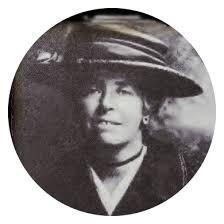aDNA evidence now for Bronze Age continuity into the Early Iron Age - as archaeologist Maud Cunnington first argued in 1923, and in 1932 (against the young Christopher Hawkes). https://twitter.com/thierrygrange5/status/1265314026206175232">https://twitter.com/thierrygr...
Shared DNA between Danube and eastern France back to Neolithic makes sense to the Iron Age.
Not keen on the occasional ‘waves of migration’ - but it’s not impacting on interpretive method really. The latter instead properly scientific in this piece.
Only two Beaker samples which is a shame. But they seem to fit previous ideas, which is promising.
Only two Beaker samples which is a shame. But they seem to fit previous ideas, which is promising.
"the [Bronze Age] steppe component becomes homogeneous, and individuals from the Hallstatt & La Tène culture [sic] in the French territory [sic] display similar affinities toward both modern & ancient populations...
This could indicate that the transition from the Bronze Age to the Iron Age in France was mostly driven by cultural diffusion [ok, we understand] without major gene flow from an external population. This would be consistent with an archaeological & linguistic hypothesis"
BOOM
BOOM
"It is important to mention, however, that due to the relative genetic homogeneity among European populations by the Bronze Age, subsequent migrations between different parts of Europe could easily remain unnoticed at this level of coverage"
This is really important.
This is really important.
This is the first period in European prehistory where we have historically-documented & #39;migrations& #39;. We can definitely see people moving in both archaeology & isotopes. But these movements - these so-called & #39;migrations& #39; - are so small-scale that we can& #39;t yet see them in the aDNA!
Which is *exactly* what Maud Cunnington said (1923). Her phrase: long-term, small-scale ‘incursions’ (which she repeated vs Hawkes& #39; invasionism in 1932). Collis: a constant to-&-fro. Historical & #39;migrations& #39; might be recording the movement of a family. It& #39;s not always about war.
"In such a context, tracing migrations [if we still wish to use this term, which represents a specific process] from one part of Europe to the other becomes more challenging and will require a deeper temporal and geographical resolution"
Absolutely. Spot on.
Absolutely. Spot on.
To end, I think this might also work with Cunliffe’s latest on ‘proto-Celtic’ linguistics having deep prehistoric western Atlantic roots. (N.B. Not the 2010 Celtic from West hypothesis - that was not upheld linguistically).
For those interested, this is Maud Cunnington. Our most learned British prehistorian of the Edwardian period.
You can read more about her here: https://trowelblazers.com/maud-cunnington/">https://trowelblazers.com/maud-cunn...
You can read more about her here: https://trowelblazers.com/maud-cunnington/">https://trowelblazers.com/maud-cunn...
@threadreaderapp Please let me transcribe this for my teaching!

 Read on Twitter
Read on Twitter



